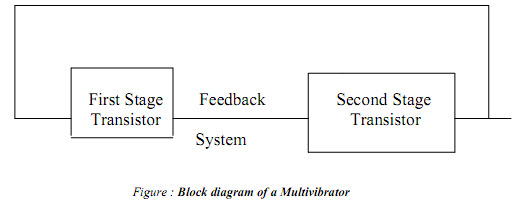Explain the different types of multivibrators ?
Multivibrator is basically a two-stage amplifier with output of one supplied back to the input of the other .

Multivibrator is a switching circuit and may be defined as an electronic circuit that generates non-sinusoidal waves, such as rectangular waves, saw tooth waves, square waves etc. Multivibrators are capable of storing binary numbers, counting pulses, synchronsing arithmetic operations and performing other, essential functions in digital systems. In a multivibrator, each amplifier stage supplies feedback to the other stage in such a way that one transistor is driven to saturation and the other to cut-off or vice-versa. This is termed as the state of the multivibrator. The condition in which the multivibrator may remain indefinitely until the circuit is triggered by some external signal is termed as the stable state.
There are only two possible states of a multivibrator are as follows:
First state: Transistor T1 'on' and transistor T2 'off'
Second state: Transistor T1 'off' and transistor T2 'on '
Depending upon the type of coupling network employed, the multivibrators are classified into the following three categories.
1. Astable or free-running multivibrator.
2. Monostable or single-shot multivibrator.
3. Bistable or flip-flop multivibrator.
The first one is the non-driven type whereas the other two are the driven type (also called triggered oscillators).
Multivibrators are used for various purposes such as generation of non-sinusoidal waveforms ( square, rectangular, sawtooth etc.) and pulses occurring periodically, frequency division, synchronized generation of pulses and extended waveforms, generation of time delays, storage of binary bit of information etc.